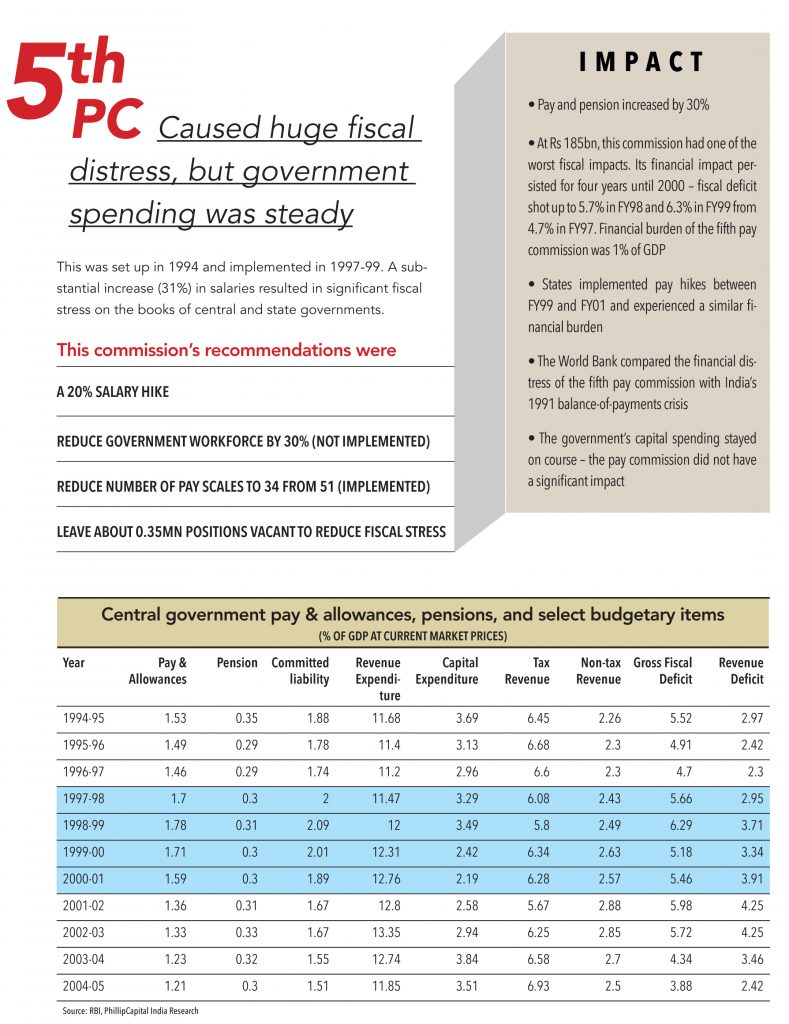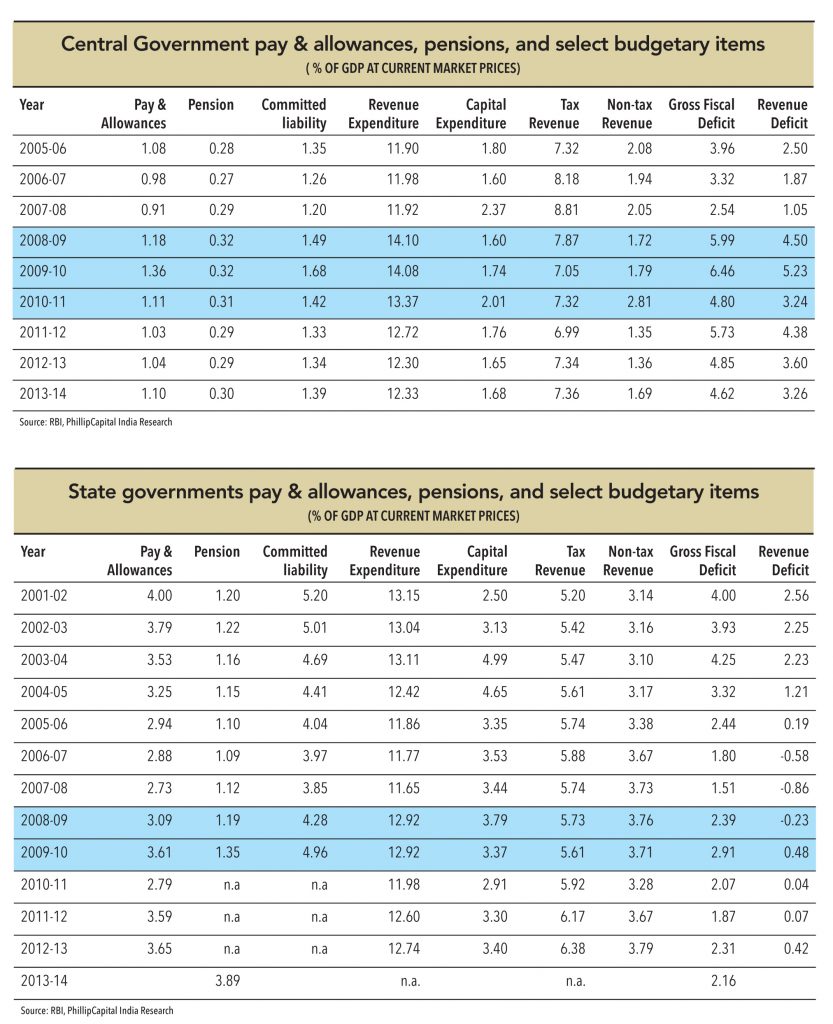Pay commissions, usually eagerly awaited by government employees, result in salary upgradations every ten years for central government employees; state governments also implement these – albeit with a lag. While these commissions usually disturb fiscal calculations and developmental spending, they promote consumption. The seventh pay commission hikes are coming at a time when economic growth is weak and recovery is largely reliant on government spending, as the private sector reels under excess capacity, weak demand, and lack of funds.
The seventh pay commission (7th PC) has recommended a 14% increase in the salaries of government employees effective 1st January 2016. This is the lowest-ever hike recommended by any pay commission so far – average hikes implemented by the last three pay commissions have been 30-50%. Also, this time the hikes are not likely to be backdated. These factors inherently limit the impact that the hikes will have on stimulating demand. However, any positive impact in the current economic scenario is a welcome boost. The fiscal dent (% of GDP) will be almost similar to previous pay commissions despite the fact that the 7th PC is a monster in sheer size at Rs 1tn vs. Rs 260bn in the 6th PC.
In this issue, Ground View tries to gauge the extent of the 7th PC’s impact on fiscal deficit, tax revenue, government borrowing, effect on PFCE, and of course on the very important parameters of savings, inflation, GDP, and sectors. It was also important to analyse the impact on central and state government finances and to check if there was any adverse impact on capital spending. GV polled government employees across various sectors, states, and grades to understand how they would choose to spend the increase in their income. Read on to delve deep into the complex world of pay commissions and to find out if their impact justifies the hype that invariably surrounds them.
THE first pay commission was set up in 1946, and became a decennial event since then. In all, seven pay commissions have been set up in India. The objective of a pay commission is to revise the salaries of the central government employees (current strength: 3.3mn). Top-25 Indian cities (by population) account for 80% of central government employees – they have a significant presence in Bengaluru, Kolkata, Mumbai,and Vishakhapatnam.
Usually, state governments also follow the recommendations of the pay commissions and implement similar hikes for their employees. Even the salaries of public sector employees are also typically revised in line with the PC recommendations – however, these come with a lag and the extent of the revision is contingent on company performance.
Most of the respondents expected a hike of 25-35% in the seventh pay commission award. Defence personnel are largely unhappy with the quantum of the hike
– GV survey takeaway
Central pay commissions are applicable to all central government employees of:
• All India Services
• Personnel of Union Territories
• Indian Audit and Accounts Department
• Regulatory Bodies
• Supreme Court
• Defence Forces
Salary hikes by pay commissions have always been more than 14% and the 4th, 5th, and 6th PCs recommended the maximum hikes at 28%, 31%, and 54%. The fiscal impact was most significant during the 5th and 6th PCs – this will also be true for the 7th PC hikes (once implemented).




Subscribe to enjoy uninterrupted access